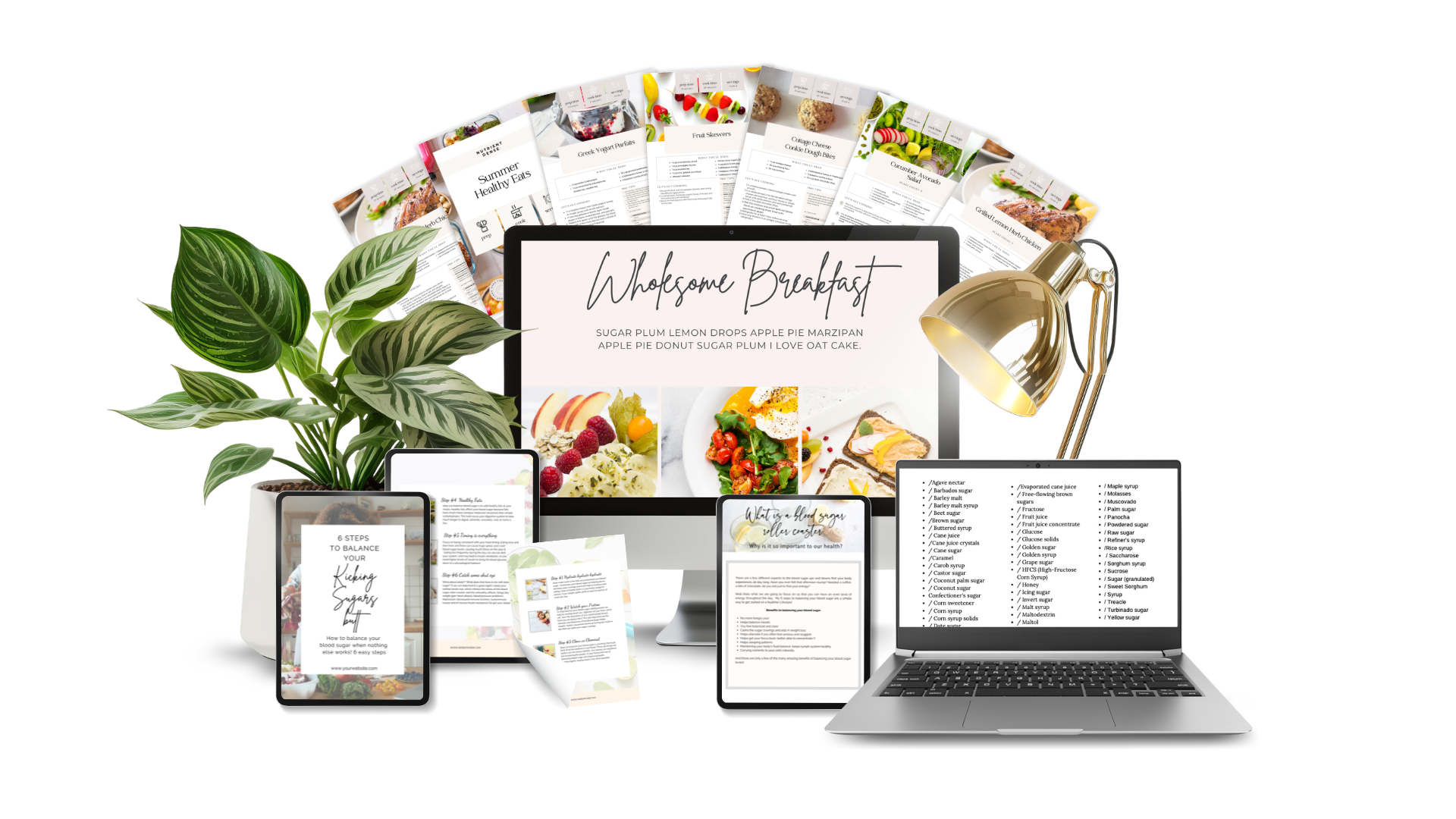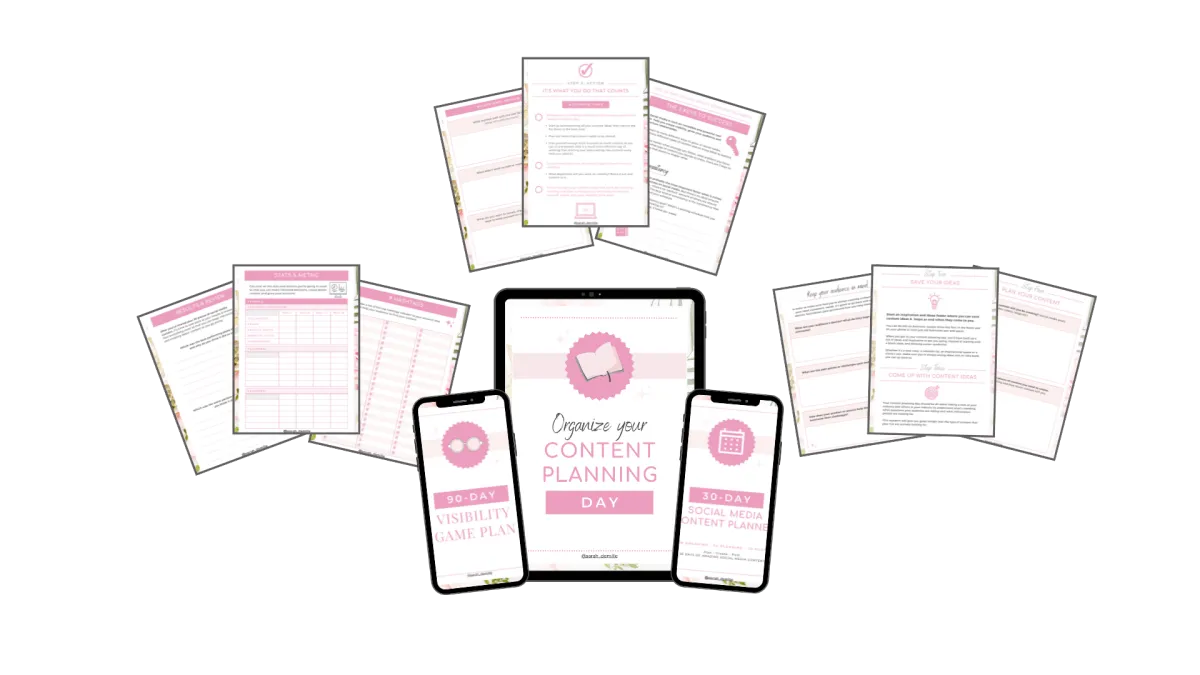THE COACHES COLLECTION - ONLINE CHALLENGE SOLUTION

Unlocking the Power of Content Pillars for Health Coaches: A Complete Guide
As a health coach, you’re passionate about helping your clients achieve their desired wellness goals. But when it comes to growing your own coaching business, especially with all of the behind the scenes work that has to be done, such as social media content, blogs, emails livestreams oh my!!!! I know I felt so overwhelmed doing it all! I felt like it was nothing but content content and more content creation, you might be feeling overwhelmed or unsure where to start as well.
If this sounds familiar, you’re not alone. Many health coaches struggle with creating a content strategy that resonates with their audience and drives meaningful engagement, all while being able to keep up with the demands of a health coach and staying consistent in order to find paying clients online.
That’s where content pillars come in. These are a life saver for me! In this blog, we’ll break down everything you need to know about content pillars—what they are, why they matter, and how you can use them to create content that connects with your ideal clients and grows your coaching business.

What Are Content Pillars?
Content pillars are the foundational themes or topics that represent the core of your health coaching business. Think of them as the main categories or subjects that define what you stand for, what you’re passionate about, and what you want to share with your audience. These pillars guide your content creation, ensuring that everything you produce—whether it’s a blog post, social media update, or email newsletter—aligns with your business goals and resonates with your audience’s needs.
For example, if your health coaching niche focuses on holistic weight loss, your content pillars might include topics like nutrition, stress management, physical activity, and mindfulness. Each of these pillars would then have subtopics that allow you to dive deeper into each specific area. For instance, under the “nutrition” pillar, you could cover subtopics like meal planning, macros, and the benefits of whole foods.
By establishing clear content pillars, you create a roadmap for your content strategy. Instead of feeling scattered and unsure of what to post, you’ll have a structured plan that ensures consistency, relevance, and value in every piece of content you create.
Why Content Pillars Matter for Health Coaches
You might be wondering why content pillars are so important, especially when you have so many other aspects of your business that you have to focus on to keep it all running smoothly and consistently. The truth is, content pillars can make or break your content strategy.
Here’s why they matter:
1. Consistency and Focus
One of the biggest struggles health coaches face is staying consistent with their content. It’s easy to start strong, but over time, many coaches struggle to keep up with regular posting. Content pillars solve this problem by providing a clear structure to your content creation process. With defined pillars, you always know what topics to cover, which keeps your content focused and aligned with your overall goals.
2. Stronger Connection with Your Audience
Your audience is looking for content that speaks directly to their needs, challenges, and goals. By focusing on specific content pillars, you ensure that your content is relevant and valuable to your target audience. This relevance helps you build a stronger connection with your audience, as they see you as a trusted source of information, seeing that you understand where they are in their wellness journey, and support in your niche.
3. Streamlined Content Creation
Content creation can be time-consuming and stressful, especially when you’re trying to come up with new ideas on the fly. Content pillars simplify this process by giving you a framework to work within. When you know your pillars and subtopics, brainstorming content ideas becomes much easier and faster. You’ll spend less time figuring out what to post and more time creating high-quality content that serves your audience.
4. Enhanced SEO and Visibility
If you have a blog or website, content pillars can also help improve your search engine optimization (SEO) efforts. By consistently creating content around specific topics, you can establish your site as an authority in those areas. This can lead to higher search rankings and more organic traffic to your website, which in turn can attract more potential clients to your coaching business.
How to Create Content Pillars for Your Health Coaching Business
Now that you understand what content pillars are and why they’re important, let’s dive into the process of creating them for your health coaching business. The following steps will guide you through identifying your pillars, developing subtopics, and putting your content pillars to work in your strategy.
Step 1: Identify Your Niche
Before you can create content pillars, you need to clearly define your niche. Your niche is the specific area of health coaching that you specialize in, and it’s the foundation of your content pillars. Think about what sets you apart from other health coaches—what unique approach or perspective do you bring to the table? Your niche should reflect your expertise, passion, and the specific needs of your target audience.
For example, if your niche is plant-based nutrition for busy professionals, your content pillars might revolve around topics like quick and easy plant-based recipes, meal prepping tips, the benefits of a plant-based diet, and strategies for maintaining a healthy lifestyle on a tight schedule.
Step 2: Choose 3-5 Core Content Pillars
Once you’ve defined your niche, it’s time to identify your core content pillars. These should be broad topics that encompass the main areas of your health coaching practice. Aim to choose 3-5 pillars that align with your niche and address the key challenges, goals, or interests of your ideal clients.
For example, if your niche is holistic wellness for women, your content pillars could include:
Nutrition: Focusing on balanced eating, superfoods, and dietary supplements.
Mindfulness: Covering meditation techniques, stress reduction, and mental clarity.
Physical Activity: Providing workout routines, yoga practices, and fitness tips.
Self-Care: Emphasizing the importance of rest, relaxation, and mental well-being.
Women’s Health: Addressing hormone balance, reproductive health, and aging.
These pillars represent the core themes of your coaching business and will guide all of your content creation efforts.
Step 3: Develop Subtopics for Each Pillar
With your core pillars in place, the next step is to brainstorm subtopics for each one. Subtopics allow you to dive deeper into specific areas within each pillar, providing a variety of content ideas that keep your audience engaged and informed.
For example, under the “Nutrition” pillar, your subtopics could include:
Meal Planning: Tips for creating balanced meal plans, grocery shopping guides, and meal prep ideas.
Detox Diets: The pros and cons of detoxing, how to safely detox, and recipes for detox smoothies.
Superfoods: Benefits of superfoods like kale, quinoa, and chia seeds, and how to incorporate them into meals.
By developing a list of 7-10 subtopics for each pillar, you’ll have a wealth of content ideas at your fingertips, making it easier to stay consistent with your posting schedule.
Step 4: Align Your Content with Audience Needs
To make sure that your content resonates with your audience, it’s important to align your pillars and subtopics with their needs, desires, and pain points. Think about the questions and challenges your clients frequently bring up. What are their goals? What obstacles are they facing? By addressing these issues in your content, you position yourself as a valuable resource and trusted expert in your niche.
For example, if your audience struggles with finding time to exercise, your “Physical Activity” pillar could include subtopics like quick workouts for busy schedules, tips for staying motivated, and ways to incorporate more movement into daily life.
Step 5: Create a Content Calendar
A content calendar is an essential tool for staying organized and consistent with your content creation. Once you’ve identified your pillars and subtopics, map out a schedule for when and where you’ll post each piece of content. This could include blog posts, social media updates, email newsletters, videos, and more. Remember to set a schedule that works for you, something that will allow consistency without the stress!
Your content calendar should include the following:
Post Dates: When each piece of content will go live.
Content Type: The format of the content (e.g., blog post, Instagram story, email).
Content Pillar: Which pillar the content aligns with.
Subtopic: The specific subtopic covered in the content.
By planning your content in advance, you’ll be able to maintain a consistent posting schedule, which is key to building and sustaining engagement with your audience. (and keeping your sanity)
Step 6: Repurpose Content Across Platforms
To maximize the reach of your content, consider repurposing it across multiple platforms. For example, a blog post on “10 Quick Plant-Based Dinner Recipes” can be turned into an Instagram carousel, a Pinterest pin, a short cooking video, and an email newsletter. Repurposing content not only saves you time but also ensures that your message reaches a wider audience.
When repurposing content, be sure to tailor it to the platform you’re using. For instance, you might summarize key points for a social media post, create a visual infographic for Pinterest, or record a video explaining the content in more detail for YouTube.
Step 7: Analyze and Refine Your Strategy
Content creation is an ongoing process, and it’s important to regularly review the performance of your content to see what’s working and what’s not. Pay attention to metrics on your social media like engagement, website traffic, and client inquiries to gauge the effectiveness of your content pillars.
Based on your analysis, you may need to refine your pillars, adjust your subtopics, or experiment with new content formats. The goal is to continuously improve your content strategy to better serve your audience and achieve your business goals.
Putting It All Together
Creating content pillars is a powerful way to streamline your content creation process, stay consistent, and connect with your ideal clients. By identifying your niche, choosing core pillars, developing subtopics, and aligning your content with your audience’s needs, you’ll build a strong foundation for your health coaching business.
Remember, content pillars are not set in stone—they can evolve as your business grows and as you learn more about your audience. The key is to stay flexible and open to making adjustments that will help you achieve long-term success.
Health Coach if you are looking for more support with your social media and back office needs such as emails blogs and monthly content ideas hop on the VIP List here for the Content Essentials Club a membership exclusively for health coaches

Instant Access
Social Media Action Pack for Wellness Coaches & Entrepreneurs
30 Day Social Media Planner - 90 Day Visibility Gameplan - Content Planning Day Workbook
© Copyright 2017 The Coaches Collection
